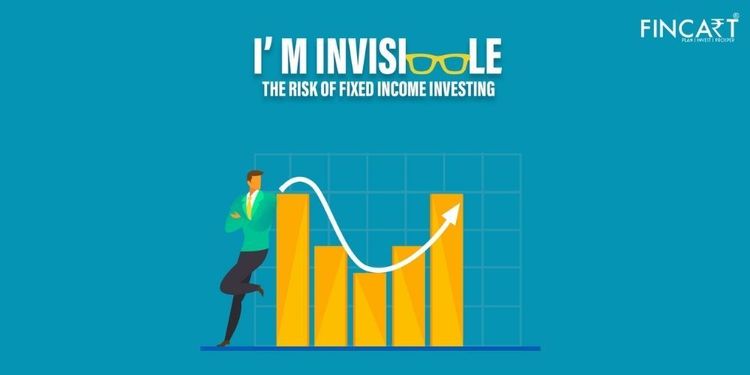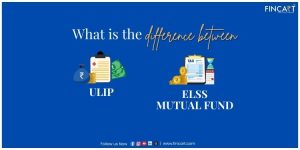Table of Contents
ToggleWhen it comes to investments, many people equate Fixed Income Investing with safety and stability. The promise of “certainty of return” makes fixed deposits, bonds, and debt instruments a preferred choice for conservative investors. Unlike equity, fixed income is less volatile and adds balance to a portfolio, often serving as a cushion during market swings.
However, equating certainty with being risk-free can be misleading. Fixed income carries hidden risks—such as credit defaults, interest rate fluctuations, and tax inefficiencies—that can silently erode returns.
Ignoring these risks may result in financial setbacks over time. To truly benefit, investors must look beyond surface-level safety and plan strategically, often with the guidance of a professional investment planner.
Why Fixed Income Feels Safe—but Isn’t Risk-Free
For decades, investors have trusted bank deposits, corporate FDs, and government-backed securities. While defaults are rare, history shows they do happen. Corporate deposits have failed, cooperative banks have collapsed, and even large banks have faced crises.
Why don’t these incidents shake investor confidence? Because they usually affect smaller groups of depositors, not the entire market. This creates a false sense of security. Many also assume the government won’t let public sector banks default—again, not a guarantee.
This is why working with a qualified investment advisor or investment planner is essential. Professionals can help you identify hidden risks and balance safety with returns.
Pre-Tax vs. Post-Tax Returns: The Real Picture
A common misconception in Fixed Income Investing is judging an investment solely by its pre-tax returns. While banks and financial websites often highlight the promised interest rate, what truly matters is the post-tax return—the actual money that ends up in your pocket after taxes.
For investors in higher tax brackets, a fixed deposit that looks attractive on paper may yield much less after tax deductions. In contrast, debt mutual funds held for three years or more can offer better tax efficiency due to indexation benefits, which adjust the purchase price for inflation before calculating capital gains.
By focusing on post-tax returns rather than just headline interest rates, investors can make smarter, more profitable fixed income choices and avoid surprises at tax time.
Fixed Deposit vs. Bond Fund: Where’s the Risk?
When evaluating Fixed Income Investing, two of the most common choices are Fixed Deposits (FDs) and Bond Funds. At first glance, both seem safe, but the way risk shows up in each is very different.
Fixed Deposit (FD)
- An FD offers a fixed, guaranteed return decided at the time of investment.
- No matter how interest rates move in the economy, your return remains unchanged.
- However, this comes at a cost—the upside from interest rate fluctuations benefits the bank, not you. For example, if interest rates rise after you lock into an FD, you’re stuck with a lower return until maturity.
- Risks such as credit default (bank failure) are hidden, though deposit insurance in India protects up to ₹5 lakh per depositor.
Bond Fund
- A Bond Fund is a pass-through instrument, meaning the gains and losses from the underlying bonds directly impact the investor.
- Returns are not fixed; they vary daily through the Net Asset Value (NAV), which reflects bond price changes based on interest rate movements, credit quality, and liquidity.
- If interest rates fall, bond prices rise—leading to higher NAVs and better returns. Conversely, rising interest rates can lower NAVs.
- Unlike FDs, bond funds are market-linked, which makes risks more visible, but also offers opportunities for higher, tax-efficient returns if held strategically.
The Key Difference
While both carry similar underlying risks (interest rate and credit), FDs mask the risks by offering guaranteed returns, creating a false sense of safety. Bond Funds, on the other hand, reveal risks upfront through daily NAV changes—making them appear riskier, but also more transparent and potentially rewarding in the long run.
Key Risks in Fixed Income Investing
Even though fixed income investments are considered safer than equities, they carry hidden risks that every investor should understand. Let’s break them down:
1. Interest Rate Risk
The value of bonds moves inversely with interest rates—when rates go up, bond prices fall, and vice versa.
- Longer-duration bonds are more sensitive to these changes, meaning their prices fluctuate more.
- Shorter-duration bonds react less and recover faster when rates change.
- Bond funds reflect these changes daily in their Net Asset Value (NAV), while fixed deposits do not, which is why bond fund performance can seem volatile.
2. Credit Risk
This is the risk that the issuer may fail to pay interest or return your principal.
- Government bonds are almost risk-free.
- Corporate bonds carry varying risk based on credit ratings (AAA being the safest, lower-rated bonds riskier).
- Lower-rated bonds may offer higher interest, but defaulting could erase years of gains.
3. Reinvestment Risk
This occurs when interest payments or matured principal cannot be reinvested at the same or higher rate, especially during falling interest rate periods. It can reduce overall returns over time.
4. Liquidity Risk
Some bonds, especially corporate bonds, are not frequently traded.
- If you need to sell quickly, it may be difficult, and the price you get could be lower than expected.
- In bond funds, this can also affect the NAV and the value of your investment.
In short: understanding these risks helps investors make informed choices, balance their portfolios, and use fixed income strategically—rather than assuming it is completely safe.
The YTM Trap in Bond Funds
Many investors assume that the Yield to Maturity (YTM) of a bond or bond fund represents a guaranteed return—but this is not true.
- YTM is an estimate of what you might earn if the bonds in the fund are held until maturity, assuming no changes in interest rates or credit quality.
- Fund management fees and other expenses are subtracted, which can reduce actual returns.
- Market fluctuations, such as changes in interest rates or bond prices, can make the real returns higher or lower than the YTM.
YTM gives a guideline, not a guarantee. Understanding this helps investors avoid expecting “fixed returns” from instruments that are market-linked, like bond funds.
What Should Investors Do?
The solution is smart asset allocation—balancing equity and debt based on your risk tolerance, with guidance from an investment advisor.
Core Strategy
- Allocate the bulk of fixed income investments to low-duration, low-risk debt funds.
- This minimizes both credit risk and interest rate sensitivity.
Tactical Strategy
- Add longer-duration bond funds if interest rates are expected to fall.
- Use dynamic bond funds managed by experts to navigate changing markets.
- Take on credit risk only if you understand it well, since defaults can wipe out years of gains.
Role of an Investment Planner or Advisor
In today’s complex financial markets, DIY investing can be risky. An experienced investment planner or investment advisory services can:
- Assess your risk tolerance and investment goals.
- Structure an efficient mix of fixed income and equity.
- Identify tax-efficient opportunities.
- Protect your portfolio from hidden risks.
Final Thoughts
Fixed Income Investing is not as risk-free as it seems. FDs and corporate deposits carry hidden tax and credit risks, while bond funds expose investors to interest rate and liquidity risks.
- Investors in lower tax brackets can use bank FDs and post office schemes.
- For others, bond funds held over three years offer better tax efficiency.
- Keep the core debt allocation low-risk, and only add higher duration or credit risk products tactically.
With proper planning and advice from a trusted investment advisor, you can make fixed income a stable pillar of your portfolio without falling for the “invisible risks.”




